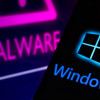Microsoft patents frustration-detecting help system
A new Microsoft patent has the Internet abuzz with tinfoil-hat-like conspiracy theories. The patent, which covers biometric feedback that can trigger certain features in software, has triggered adverse reactions by bloggers who are convinced that this is all part of a sinister plot by corporations and governments to closely monitor their citizens. But is it? The answer lies in the patent itself, and like all patent documents, it's long and tedious reading. Fortunately, you have Ars Technica to do it for you.
The patent document starts out by describing the relationship that typical computer users have with their applications, documents, and daily tasks. The "application-centric" model dates back to the days of mainframes and was pretty much the only way command-line users could interact with their computers: you typed in the name of the application, then selected the file you wanted to work with (if you were really advanced, you could do both on one command line input).









































































